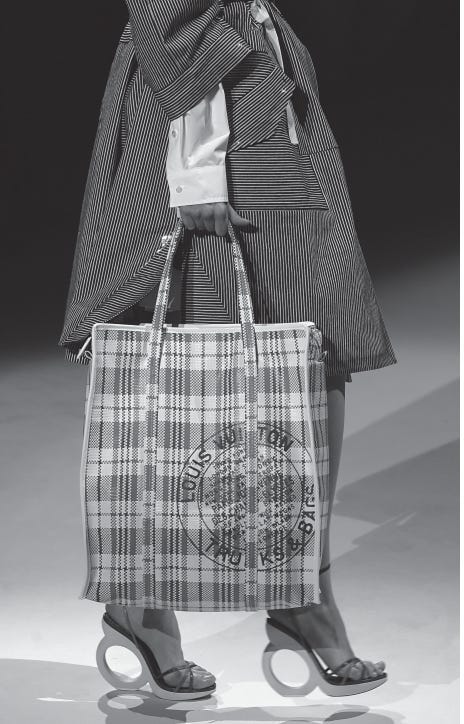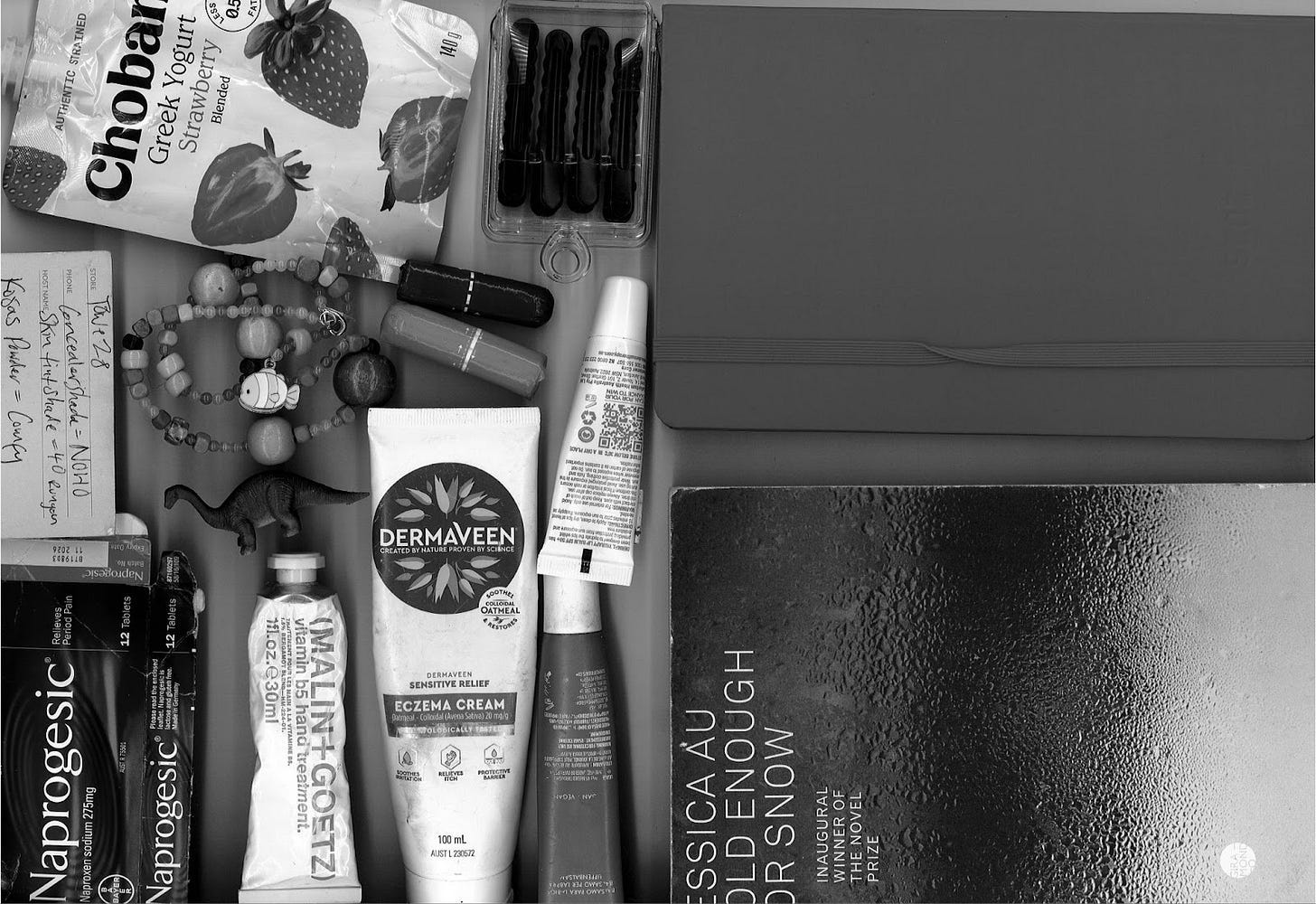After scream-crying into my pillow, willing myself to sleep, there is no greater satisfaction than waking up the next morning, staring into my mirror and finding massive bags bulging under my eyelids. Sending my lacrimal drainage system into overdrive, my sadness has a physical shape.
Recently, when recovering from one of these episodes (I’m fine), I was being counselled by a friend. I was lamenting that I was sick of the emotional baggage that engulfs my life. Both of us are in the middle of moving houses – a time that forces us to sit amongst our earthly possessions and wonder where it all went wrong. But as much as our things both disgust and delight us, accumulating both physical and psychological ‘stuff’ is human. We ended the conversation by reminding each other that baggage is inescapable.
As much as I know this to be true, I often think God unevenly distributed baggage amongst His people. I acknowledge that there is a correlation between wealth and the amount of physical belongings, but what about emotional baggage? One could argue that there is also a correlation between disadvantage and the amount of mental baggage, but this judgement is based on just rough immeasurable ideas and assumptions. Like all emotions, I don’t think pain, happiness, trauma, or heartbreak discriminates. But the amount we carry (in both senses), is revealing. Ultimately, we all carry the burden of existing. But are some people able to store it, rid it, hide it, conceal it, easier than others (me)?
Earlier in the week I witnessed a young guy run for the train. Simply with the clothes on his back, he effortlessly slipped between the ticket gates and smoothly jumped from the platform to the carriage. Meanwhile, I was strapped down with my meticulously meal-prepped salad, separate container for dressing, various creams (eczema cream, hand cream and sunscreen), pills (antidepressants, period pain, panadol, heartburn and two types of antihistamines), hand sanitiser, book (The Slap, 488pp), drink bottle and shameful Mecca receipts. Like a donkey trekking vital supplies across urban terrain, I waddled to the platform, taking extensive time to dig out my wallet and resurrect my Myki, before collapsing on the platform seat. It felt indisputable at that moment, I had far more baggage than the guy ahead of me. He seemed so free.
Bags are feminised by outdated gendered fashion trends, heavily enforced by popular culture, they are mostly considered frivolous unless serving others in a group adventure (like Mary Poppins). It is archaic to say that reductive binaries present an accurate portrayal of emotional and physical loads; i.e., women carry more shit, therefore they have bigger trauma/men don’t carry bags, so they don’t have feelings. However, I cannot help but consider the interaction between the two concepts holding some value. With examples such as ‘therapyboi’ (a rise of masculine emotional vulnerability) and the widely socially accepted Harry Styles (a rise of masculine people wearing feminine fashion), perhaps, and rightly so, these cultural markers are shifting.
If I apply some basic mathematics: the rise of gender-neutral fashion + emotional masculinity = Jacob Elordi’s bag collection.
The image carousel of Jacob Elordi sporting bags by Louis Vuitton, Bottega and Celine is beautifully arresting. I am dying to know the contents. What possible baggage does this gorgeous 6ft boy carry?
However, I realise the fascination with Elordi’s bag collection is less about what is inside, than what these bags externally represent. I must take a moment to sympathise with Elordi, as like a bag, he too must feel that the world is captivated by his body (vessel) rather than what is in his brain (inside) </3. But he does present an interesting and important cultural idea. Why don’t we see more masculine people with feminine bags? Why are bags considered feminine? Is that why they are considered ‘superficial’? I take extreme pleasure in buying a beautiful bag, hyper-aware of its make and what it means. As every accessory sends a cultural message, within our micro-scenes, but globally and across time periods, it is undeniable that bags are important cultural artefacts.
The classic ‘red-white-blue striped’ bags that are now synonymous with mobilisation – migrant upbringings, transportation, moving house – the bags are vessels of deep cultural history. Originating in Hong Kong in the 1970s and manufactured in Taiwan, to meet the rising state’s economic and industrious boom. There is a deep political history entwined with the bag’s creation and enduring use, that would require a separate essay. However, Louis Vuitton’s 2007 replica of the ‘Red-White-Blue’ bag, designed by Demna Gvasalia is a classic example of Western appropriation and exploitation, something Asian communities are very familiar with.
Bags indicate class, culture and hegemony. If we extrapolate ‘trends’ beyond consumption, we can view these markers of popularity as a form of power. To be ‘in fashion’, historically has been what the dominant cultural class has considered noteworthy. But as Asian minorities have had to constantly prove their acceptance within Western culture, it is disturbing when a luxury French fashion house hand selects something ubiquitous with diaspora, manual labour and at times shelter, for a runway. Bags hold meaning, and this can never be erased.
But the constant cyclical nature of fashion is always surprising me. Wessie Ling asserts in her ‘Bag of Remembrance’ detailing the sociology behind the ‘red-white-blue’ striped bag, that the model operates on a ‘one-way power flow’, the West can take what they like with an inflated price tag, but this structure cannot be reversed. While Sandy Liang’s 2023 Baggu collaboration is indeed a different time period and cultural context (with Liang raised as a Chinese immigrant raised in Chinatown in New York) who outwardly credits a lot of her design inspiration to this, I wonder what it means when the white women fight over these symbols of cultural capital. The West has accepted Sandy Liang, so is it okay for non-Asian brands to join this trend and profit? What does the historic and present colonisation of Hong Kong have to do with it? Is it acceptable to use a bag, with no understanding of its history? It reminds me of when Miranda Presley destroyed Andrea for not knowing the historical underpinnings of the two very different blue belts.
What does a Baggu Medium Nylon Crescent bag tell us about someone, when compared to the Uniqlo Round Mini Shoulder? What does a New Yorker tote bag (if I get another targeted subscription tote bag deal advertisement I’ll scream) tell us about someone, in comparison to say the Saturday Paper tote bag? What does a Freitag bag tell us, over a reusable green Woolworths bag? Funnily, a friend living in Germany told me that while the Swisse recycled truck tarp company is culturally coveted in Melbourne, it is not the cool brand in its country of origin. A bag’s values are deeply rooted in place and hold critical social and political history.
Alexandra Dane’s study, ‘Cultural Capital Performance: Tote Bags and Contemporary Literary Festivals’, critically analyses the performativity of tote bags as a form of cultural power. Rooted in Pierre Bourdieu’s theory of the ‘cultural capital’, which establishes that particular goods represent membership of a particular social group or class. Dane employs the concept to the epicentre of the educated and privileged, art scene — the literary festival. Dane explores the meaning of literary totes, with the detail of their logo or branding to think about how they signal proximity to culture, class and education. But it is a signal that only those within this particular group recognise if you know you know. This understated display is deeply coded: I read the right books, I watch the right films, I am superior to you. This proves the power of the bag, beyond universally recognised brands. The smaller membership groups (a micro-bakery/publication/label in Melbourne) sometimes present the loudest message, but only if you’re in the know.
While I have been using physical bags interchangeably with emotional baggage, I am aware that the two are completely different forces. In most cases, our previous experiences do not physically materialise like the vessels we use to transport items. However, perhaps colostomy bags are the exception. So why do we refer to our thoughts, feelings, ideas, traumas, as ‘baggage’? The assumption that we ‘carry’ our emotional trials and tribulations externally is interesting to me. Do we collect our past in a bag, putting it down when we feel fit? Or are they permanently strapped to us? Does the size of the bag indicate the size of the feeling? I’m sure going in on a tiny bag on the weekend presents the prospect of a big night.
When talking through my idea for this essay with Bella, she reminded me of the iconic Girls Season 1, Episode 3 scene, where Shoshana is watching the reality television programme, ‘Baggage’ (a real show BTW). The show has contestants present physical luggage in small, medium and large, to correspond with their emotional loads. Shosh reveals her smallest baggage is her IBS, her medium baggage is that she truly does not love her grandmother and her biggest baggage is that she is a virgin.
I genuinely thought about sharing my emotional baggage, but after I typed it out and saw it articulated on my screen – I felt a visceral pain in my chest cavity.
My smallest baggage: ███████
My medium baggage: ███████
My biggest baggage: ███████
The baggage I carry is heavy and not something I would want to force onto others. Please enjoy my physical baggage in lieu.
My baggage is heavy, and while I have gone to therapy, touched grass, laughed and cried, it does not feel like it is going anywhere. There is no correct way to ‘deal’ with the experiences that shape us, and while it is important to take stock of the things that we carry, it is not always possible to unload them. Putting them in storage can sometimes do us more harm. As we move forward, I think we become stronger. It does not mean the baggage necessarily gets smaller, but perhaps as we accumulate more things, we have the capacity to hold the load differently. The more we experience, the more perspectives in which we can view our lives open up to us. Perhaps some things are not so heavy anymore.
For the foreseeable future, my bag is going to be big and bulky. But one day, I hope it won’t be. That doesn't mean I won’t have any baggage, but it is my wish, that I will be at peace with the pain (true amor fati). My arms will be toned and powerful and my belongings will feel light. And when this happens, I will buy my dream Miu Miu ‘Wander matelassé nappa leather micro hobo bag’ in red and with ease, jump onto the train.
Further Reading
Alexandra Dane, ‘Cultural Capital as Performance: Tote Bags and contemporary Literary Festivals’, https://www.erudit.org/en/journals/memoires/2020-v11-n2-memoires05373/1070270ar.pdf
Girls, Season 1 Episode 3, clip: https://www.dailymotion.com/video/x2t9nmb
Jack Savoie - ‘Bags of the Past’ series
Lindsay Maizland and Clara Fong, ‘Hong Kong’s Freedoms: What China Promised and How It’s Cracking Down’, <https://www.cfr.org/backgrounder/hong-kong-freedoms-democracy-protests-china-crackdown>
Matthew Valesco, ‘A Visual Guide to Jacob Elordi’s Sprawling Designer Bag Collection for W Magazine’, <https://www.wmagazine.com/fashion/jacob-elordi-bag-collection-bottega-veneta-louis-vuitton-chanel>
Milan Kundera, The Unbearable Lightness of Being (1984)
Tristan Claridge, ‘Bourdieu on social capital – theory of capital’, https://www.socialcapitalresearch.com/bourdieu-on-social-capital-theory-of-capital/
Wessie Ling, ‘A bag of remembrance: A cultural biography of Red-White-Blue, from Hong Kong to Louis Vuitton’, https://nrl.northumbria.ac.uk/id/eprint/32405/1/Ling%20-%20A%20bag%20of%20remembrance.pdf>











